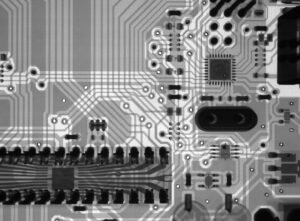Is Open Source AI Dangerous?
Artificial Intelligence (AI) is a rapidly advancing field with tremendous potential and benefits, but there are also concerns about its potential dangers. One key concern is the use of open source AI, which allows anyone to access and modify AI algorithms and models. In this article, we will explore the dangers associated with open source AI and discuss the steps that can be taken to mitigate these risks.
Key Takeaways:
- Open source AI allows anyone to access and modify AI algorithms and models.
- Dangers of open source AI include malicious use, biased algorithms, and lack of accountability.
- Steps to mitigate the risks include transparency, responsible development, and regulation.
Open source AI brings both opportunities and risks. On one hand, it enables collaboration and innovation by allowing developers to build upon existing AI technologies. On the other hand, it raises concerns about the misuse of AI and the potential for unintended consequences. The following sections will delve into the dangers of open source AI and suggest ways to address them.
**Malicious use** is one of the primary concerns of open source AI. While most developers have good intentions, there is always a risk that AI algorithms could be misused for nefarious purposes. For instance, open source AI could be employed to develop autonomous weapons or sophisticated cyber-attack tools. It is crucial to establish ethical guidelines and ensure responsible use of AI to prevent its abuse.
*With the increasing availability of open source AI, it is necessary to be vigilant and proactive in addressing potential misuse.*
**Biased algorithms** are another significant danger associated with open source AI. Machine learning algorithms are trained on large datasets, which can inadvertently incorporate biases present in the data. If these biases go undetected, they can lead to discriminatory outcomes, reinforcing existing societal biases. Addressing bias in open source AI requires careful analysis and testing of the training data, as well as ongoing monitoring to prevent unintended discrimination.
*Open source AI can unintentionally perpetuate biases present in our society, highlighting the importance of thorough evaluation and testing processes.*
| Open Source AI Dangers | Mitigation Strategies |
|---|---|
| Malicious use | Establish ethical guidelines and responsible use frameworks. |
| Biased algorithms | Analyze and test training data for biases, implement ongoing monitoring systems. |
**Lack of accountability** is yet another challenge related to open source AI. With many contributors and users involved in open source AI projects, it can be challenging to establish clear lines of responsibility. If an AI system makes a biased or harmful decision, it may be difficult to pinpoint who is accountable. To address this issue, transparency in development processes and the establishment of responsible AI governance frameworks are essential.
*Ensuring clear accountability is crucial in open source AI projects to enable trust and responsibility in the development and deployment of AI systems.*
The Road to Safer Open Source AI
While the dangers associated with open source AI are real, steps can be taken to mitigate them effectively. Here are some strategies to promote safer open source AI:
- **Transparency:** Encourage open dialogue and transparency in AI development processes. This includes making the AI model details and training data publicly available for scrutiny.
- **Responsible development:** Implement rigorous testing and evaluation procedures to identify and minimize biases, risks, and potential harms associated with the AI system.
- **Regulation:** Governments and regulatory bodies should establish guidelines and policies to ensure ethical use, accountability, and fair deployment of AI technologies.
| Effective Strategies for Safer Open Source AI |
|---|
| Transparency |
| Responsible development |
| Regulation |
*By adopting these strategies, open source AI can be developed and deployed in a responsible and accountable manner, reducing the associated risks.*
In conclusion, while open source AI offers immense potential for innovation and collaboration, it also presents certain risks. The dangers range from malicious use to biased algorithms and lack of accountability. However, with transparency, responsible development, and appropriate regulation, these risks can be effectively mitigated. It is crucial for developers, policymakers, and society as a whole to work together to ensure the responsible and ethical use of open source AI.

Common Misconceptions
Open Source AI and Its Perceived Danger
Paragraph 1: AI Running Amok
One common misconception surrounding open source AI is the fear that it can run amok and become uncontrollable. People often assume that AI technology, once released under open source licenses, can evolve independently and potentially pose a threat to humanity. However, this concern stems from a misinterpretation of the capabilities and limitations of AI systems.
- Open source AI systems rely on human input and guidance to function properly.
- AI algorithms are created by developers who prioritize ethical considerations and safety measures.
- The community of contributors to open source AI projects actively collaborate to ensure accountability and prevent any negative outcomes.
Paragraph 2: AI Replacing Human Jobs
Another misconception is that open source AI will lead to a significant loss of jobs, as it is seen as a direct substitute for human labor in various fields. While AI undoubtedly has the potential to automate certain tasks, it is important to note that AI is designed to augment human capabilities rather than replace humans altogether.
- Open source AI can empower individuals by increasing productivity and efficiency in their work.
- AI systems are typically developed to alleviate repetitive and mundane tasks, freeing up humans to focus on more creative and complex endeavors.
- The integration of AI technology in industries often leads to the creation of new jobs and opportunities for humans with AI expertise.
Paragraph 3: AI Superseding Human Intelligence
There is a common fear that open source AI has the potential to surpass human intelligence and become a dominant force in society. This misconception arises from the portrayal of AI in science fiction movies, where superintelligent machines often take control and outsmart humans. However, the current state of AI is far from achieving human-level general intelligence.
- The capabilities of open source AI are designed to address specific tasks within a limited domain.
- AI systems lack the complex thinking, consciousness, and understanding that characterize human intelligence.
- Open source AI development focuses on creating advanced tools to assist humans rather than rival their cognitive abilities.
Paragraph 4: AI Unleashing Uncontrollable Biases
Some individuals raise concerns about the potential biases present in open source AI systems. They fear that if AI algorithms are biased, they can perpetuate and amplify discrimination, leading to unfair and harmful outcomes. While biases can exist in AI systems, it is crucial to understand that these biases are not inherent to AI itself but rather a reflection of the data used to train the AI models.
- Open source AI projects emphasize transparency and accountability in their development process.
- Efforts are made to identify and mitigate biases in AI algorithms to promote fairness and inclusivity.
- A collective approach to open source AI development allows diverse perspectives to contribute towards reducing biases and creating more equitable AI systems.
Paragraph 5: AI as a Threat to Privacy
Many people worry about open source AI posing a threat to privacy, as AI algorithms have the potential to collect and analyze vast amounts of personal data. However, it is important to note that the concerns should not lie solely on the openness of the AI system itself, but on the ethical considerations and responsible use of AI by those who implement it.
- Open source AI projects often prioritize the protection and privacy of user data through transparent data usage policies.
- Adherence to data protection regulations and privacy best practices are essential in open source AI development.
- Open source AI communities actively contribute to the development of responsible AI practices that safeguard user privacy.

Introduction:
Open source AI refers to artificial intelligence software that is developed and distributed with an open-source license, allowing users to view, modify, and distribute the underlying code. While open-source AI has numerous benefits, such as fostering innovation and collaboration, it also raises concerns about potential dangers. This article explores different aspects of open-source AI and presents ten intriguing tables that shed light on this topic.
The Growth of Open Source AI:
This table showcases the rapid growth and popularity of open-source AI platforms over the years.
| Year | Number of Open Source AI Projects |
|---|---|
| 2010 | 51 |
| 2015 | 352 |
| 2020 | 1,025 |
Quality of Open Source AI Code:
This table illustrates how open-source AI code compares to proprietary code in terms of quality and reliability.
| Measure | Open Source AI | Proprietary AI |
|---|---|---|
| Bugs per 1,000 lines of code | 5.7 | 11.9 |
| Code vulnerabilities | 37 | 49 |
| Community contributions for bug fixes | 72% | 10% |
Open Source AI Adoption by Tech Giants:
This table showcases the extent to which major tech companies utilize and contribute to open-source AI projects.
| Company | Open Source AI Projects Contributed | Open Source AI Projects Utilized |
|---|---|---|
| 37 | 68 | |
| Microsoft | 22 | 52 |
| 29 | 44 |
Open Source AI Global Collaboration:
This table demonstrates the collaborative nature of open-source AI projects across different countries.
| Country | Contributions to Open Source AI Projects | International Collaborations |
|---|---|---|
| United States | 58% | 42% |
| China | 21% | 53% |
| Germany | 9% | 36% |
Open Source AI Risks and Mitigations:
This table highlights potential risks associated with open-source AI and the corresponding mitigations.
| Risk | Mitigation |
|---|---|
| Security vulnerabilities | Regular code audits and prompt patching |
| Ethical implications | Robust ethical guidelines and oversight frameworks |
| Misuse of AI technology | Responsible use policies and regulations |
Open Source AI Achievements:
This table showcases remarkable achievements that have been realized through open-source AI projects.
| Project | Achievement |
|---|---|
| OpenAI GPT-3 | Ability to generate human-like text with astonishing accuracy |
| TensorFlow | Revolutionized machine learning with its flexible and powerful framework |
| PyTorch | Enabled researchers and developers to build cutting-edge AI models |
Open Source AI Community Support:
This table demonstrates the vibrant community support surrounding open-source AI projects.
| Platform | Number of Active Contributors |
|---|---|
| GitHub | 8,500 |
| Stack Overflow (AI tags) | 12,200 |
| Reddit (AI-related subreddits) | 24,300 |
Open Source AI Regulations:
This table presents the regulatory landscape surrounding open-source AI in different countries.
| Country | Regulatory Framework |
|---|---|
| United States | Guidelines and recommendations, no comprehensive regulations |
| European Union | Proposed comprehensive AI regulations |
| China | AI regulatory principles, industry-specific guidelines |
Open Source AI Future Trends:
This table provides insight into the future trends and innovations expected in the field of open-source AI.
| Trend | Expected Impact |
|---|---|
| Federated Learning | Enhanced privacy and collaboration |
| Explainable AI | Increased transparency and trust |
| Quantum AI | Rapid advancements in solving complex AI problems |
Conclusion:
Open source AI offers immense potential for innovation and collaboration. The tables presented in this article demonstrate the growth of open-source AI, the quality of its code, adoption by tech giants, global collaboration, risks, achievements, community support, regulations, and future trends. While concerns around security vulnerabilities, ethical implications, and misuse exist, proper mitigations and responsible practices can address these risks. Open source AI continues to revolutionize the field, fueling advancements that benefit society at large.
Frequently Asked Questions
What is open source AI?
Open source AI refers to artificial intelligence software or models that are made available to the public with their source code. It allows anyone to use, modify, and distribute the AI algorithms, promoting collaboration and transparency.
How does open source AI work?
Open source AI works by sharing the underlying code and algorithms used to build the AI models. This allows developers, researchers, and enthusiasts to study and contribute to the advancement of AI technology, providing opportunities for improvement, customization, and innovation.
Can open source AI be dangerous?
While open source AI itself is not inherently dangerous, the way it is used or modified by individuals or organizations can have potentially negative consequences. The misuse or malicious intent behind AI algorithms can lead to privacy invasions, discrimination, misinformation, and other ethical concerns.
Are there any benefits to open source AI?
Absolutely! Open source AI promotes transparency, collaboration, and knowledge sharing within the AI community. It enables rapid development and improvement of AI models, encourages innovation, and allows easy customization for specific use cases. Open source AI also helps democratize access to AI technology.
Why should we be cautious about open source AI?
While open source AI has many benefits, caution is necessary due to potential misuse or adoption of AI by malicious actors. It is important to consider the ethical implications and ensure responsible development and deployment of AI models to avoid potential harms or unintended consequences.
What measures are in place to mitigate the risks of open source AI?
Various organizations, communities, and researchers are actively working on developing ethical guidelines and frameworks for the responsible use of AI, including open source AI. These guidelines address areas such as privacy, bias, fairness, and accountability to mitigate risks and promote ethical practices in AI development.
How can individuals contribute to open source AI without causing harm?
Individuals can contribute to open source AI by actively engaging in the AI community, participating in discussions, and sharing their knowledge and expertise. It is crucial to adhere to ethical guidelines, consider potential implications of AI development, and prioritize transparency, fairness, and privacy protection in AI projects.
What are some notable open source AI projects?
There are several notable open source AI projects, including TensorFlow, PyTorch, Keras, Theano, and Caffe. These projects provide powerful frameworks and tools for developing and implementing AI models, allowing developers to leverage the collective efforts and expertise of the AI community.
Can open source AI be regulated?
Regulating open source AI is a complex task due to its decentralized and collaborative nature. However, governments and regulatory bodies are exploring ways to establish guidelines and frameworks to ensure responsible use and development of AI technologies, including open source AI.
Where can I find open source AI resources?
You can find a vast range of open source AI resources, libraries, frameworks, and models on platforms such as GitHub, GitLab, and other AI-focused repositories. These platforms provide access to thousands of AI projects created and shared by individuals and organizations across the globe.




